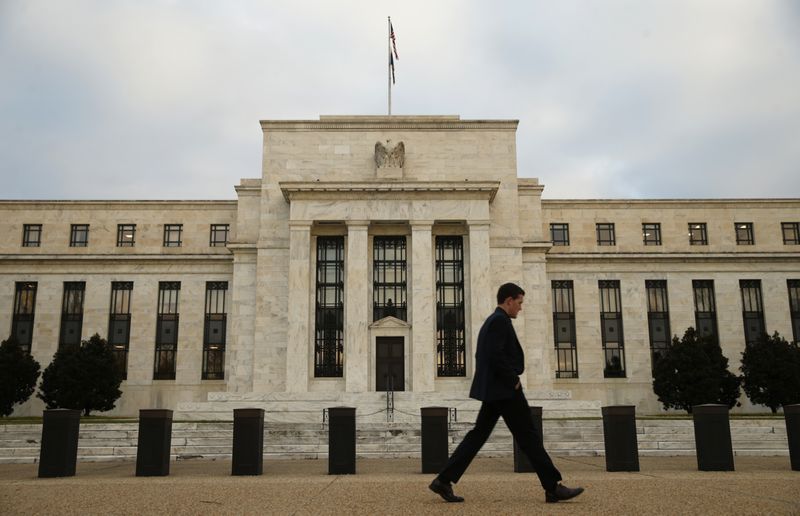By Howard Schneider
WASHINGTON (Reuters) - After their meeting five weeks ago, U.S. Federal Reserve officials nodded to higher Treasury bond yields as something that could slow the economy and help their inflation fight - if they persisted.
They have been declining steadily since, with the yield on the 10-year Treasury falling from more than 4.9% when the Fed ended its meeting on Nov. 1 to below 4.2% on Tuesday. Stocks have rallied, too, with the S&P 500 up nearly 8% since then, also a potential headache for central bankers who want financial conditions to remain tight to keep a brake on economic activity and pull inflation lower.
Far from accepting the Fed's outlook that rates will remain at the current 5.25%-5.5% range for an extended time, investors instead have pulled expectations for an initial rate cut into March with some even betting on January. A full 1.25 percentage points of easing is seen through 2024.
As of September, U.S. central bankers said they did anticipate cutting rates next year, but at that time they were eyeing an end-of-2024 rate of 5.0%-5.25%, just a quarter point below where they are now.
Whether the market's outlook is driven by a dim view of the economy, a sanguine view of inflation or other factors, the Fed may well push back against it next week.
"How do you offset it? Sound hawkish. Defend the plateau" on rates that Fed officials insist is needed to return inflation to their 2% target, said Vincent Reinhart, Dreyfus & Mellon chief economist.
Policymakers are expected to hold their benchmark rate steady for the third straight meeting at their two-day gathering on Dec. 12-13. But they also have been adamant that they are not declaring the inflation fight over, will keep the option for more rate increases on the table, and, in any event, expect to maintain the current rate well into next year.
Their stern language, however, has seemed more and more out of sync with how inflation and the economy are evolving.
AN 'OLD PLAYBOOK'
The pace of price increases in October was 3% by the measure the Fed uses for its target, and Chair Jerome Powell noted last week that over the last few months that was down to around 2.5% - a level some economist have penciled in as close enough to the Fed's 2% target for the central bank to start contemplating rate reductions.
Job openings data released Wednesday also confirmed the Fed's hope that the U.S. labor market could find more balance between the pandemic era's frantic scramble for workers and a more normal pace of hiring and wage growth.
Hiring and quits rates have now edged back around where they were before the pandemic, while the ratio of open jobs to the number of job seekers fell in October to around 1.3:1, also close to where it was before the health crisis.
The relationship between the number of job openings and the unemployment rate, meanwhile, is also now close to what would be considered a "normally" tight labor market.
"While the number of job openings declined, hiring remained largely unchanged, a sign that the labor market isn’t falling off a cliff," said Nick Bunker, research director at Indeed Hiring Lab. "A decline in openings without a spike in layoffs represents a relatively painless rebalancing between labor supply and labor demand ... It is no longer a moderating labor market. It is a market that has moderated."
New data on jobs and the unemployment rate are due Friday. In a Reuters poll of economists, the median expected 180,000 jobs created in November, roughly the pre-pandemic monthly average, with the unemployment rate steady at 3.9%.
Though the data for a "soft landing" may be falling into place, BlackRock (NYSE:BLK) chief investment strategist Wei Li on a conference call Tuesday said the market's big rate-cut expectations were "overdone."

The U.S., she said, was facing an "intrinsically inflationary" environment of a tight labor market, loose fiscal policy, and the transition to a less carbon-reliant economy. That will require the Fed to keep rates higher than in the past.
"Markets seem to be applying an old playbook," she said, calling the current market outlook "really aggressive ... Something would have to go seriously wrong."